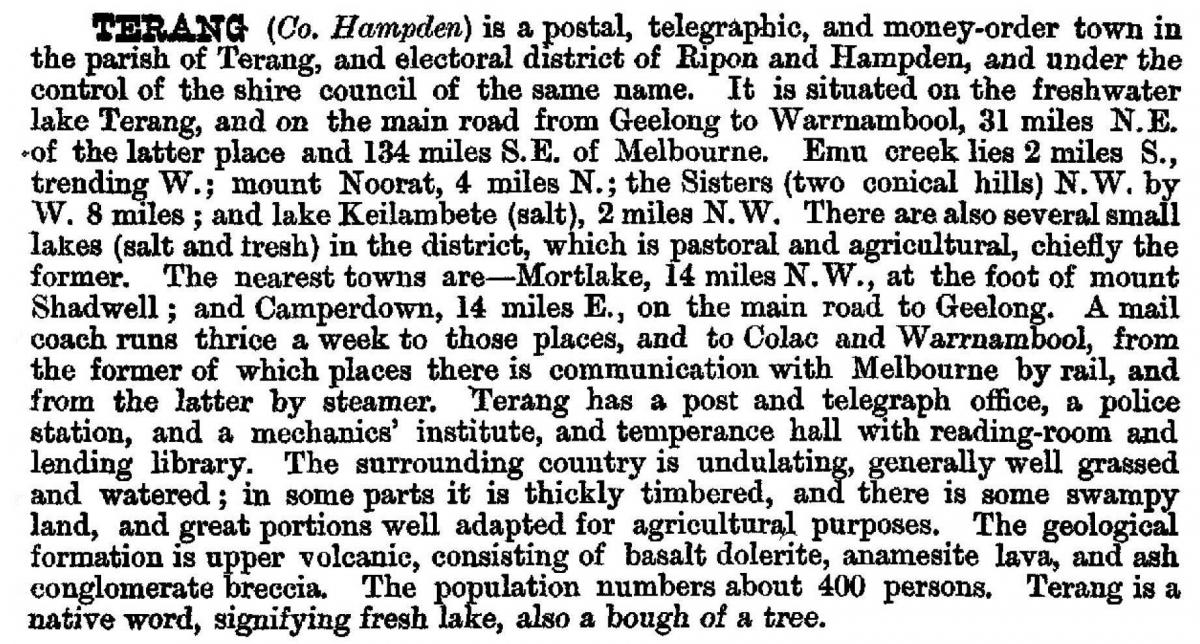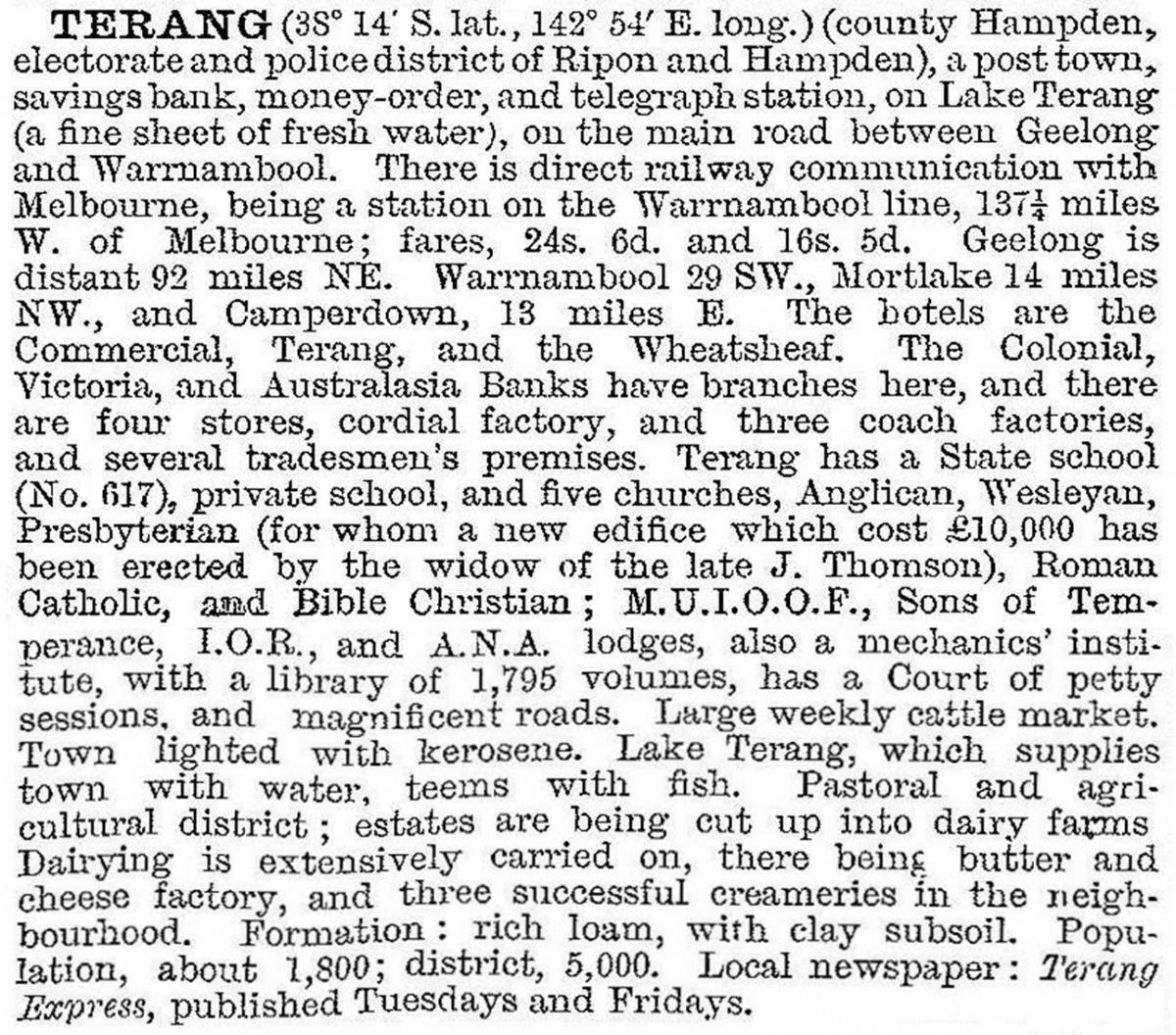Terang
Terang, a rural town on the Princes Highway, is 40 km north-east of Warrnambool, western Victoria.
Terang adjoined the Glenormiston pastoral run (1840), and an employee of the run built a slab hut beside Lake Terang. (The lake has had varying water levels, and lies beside the Terang golf course. For much of the nineteenth century it contained water). The slab hut led to a small settlement and in 1858 a township was surveyed and a school was opened.
The Terang landscape has been extensively cleared and planted with windbreaks, which contrasts with the description in 1865 in Bailliere’s Victorian gazetteer of surrounding country that was 'undulating, generally well grassed and watered; in some parts it is thickly timbered, and there is some swampy land':

The gazetteer noted that Terang had a post office, a mechanics’ institute and two hotels.
A Bible Christian church had been built by 1865, and in 1868 a Presbyterian church was built, reflecting the district’s Scottish origins. In 1887 the railway was extended from Camperdown to Terang, and within a few years some of the large pastoral estates were partly subdivided for farms, mainly dairying. A progress association was formed in 1889 and a butter and cheese factory was opened at Glenormiston in 1895. It later transferred to a larger factory at Noorat. Between 1880 and 1900 Terang’s population more than doubled to about 1300 people. In 1903 Terang was described in the Australian handbook:

During 1890-1910 several of Terang’s notable public buildings were constructed: the Thomson memorial Presbyterian church (1894), loosely modelled on Scots church, Melbourne; Anglican and Catholic churches (1898); a massive grandstand at the racecourse (1898); a new post office (1902) and public hall (1908), both of ample proportions; and a Catholic school and convent (1907-10). In 1927 a State higher education school was opened, and in 1936 the Norah Cosgrove Terang and District Community Hospital was opened.
Terang had several large stores in its shopping area, including a branch of Bright and Hitchcock’s (Geelong) and its own Terang Cooperative Society department store. The Co-op’s store was rebuilt in 1945. During World War II several properties grew flax which was processed at a mill in Terang until 1947. There was further growth after World War II when the Marida Yallock estate east of Terang was subdivided for soldier settlement and a Housing Commission estate in the town was completed. A high school was opened in 1950.
Terang’s postwar population fell from a high of nearly 2400 people (1960s) to about 1850 in the late 1990s. It has nevertheless maintained a full range of town facilities, including three hotels. The Terang Express, however, is published by Western District Newspapers at Camperdown and the Glenormiston butter factory closed in 1974.
Terang has State primary and secondary schools, a Catholic school, a hospital, a golf course, a polo field, a racecourse, a trotting track, a sport and recreation centre, a swimming pool, a motel and a caravan park.
The post office (1904), Presbyterian church, the railway station (1889) and the Marida Yallock homestead (1854) are listed on the heritage register. Marida Yallock also has notable gardens. The main street includes a tree-lined reserve, with the war memorial (1923) at the east end and the Presbyterian church at the west end.
Terang’s census populations have been:
| census date | population |
|---|---|
| 1861 | 114 |
| 1871 | 727 |
| 1881 | 573 |
| 1891 | 916 |
| 1901 | 1382 |
| 1911 | 2255 |
| 1921 | 2178 |
| 1947 | 2204 |
| 1961 | 2380 |
| 1966 | 1991 |
| 1976 | 2183 |
| 1986 | 2040 |
| 1991 | 1973 |
| 1996 | 1867 |
| 2006 | 1824 |
| 2011 | 1962 |
Further Reading
Bill Anderson, On western lands: a history of the Shire of Hampden (1964-1994), Camperdown, 1996
Back to Terang and District, Easter 1950, Editorial Committee, 1950
R.A McAlpine, The Shire of Hampden 1863-1963, Terang, 1963
Terang through the years: a pictorial history of Terang, Terang, 2009


